Whether your flat tire was caused by a stray nail, sharp rock, or any other hazard, one thing is for certain: flat tires are a major inconvenience. The last place you want to be is stuck on the side of the road! Driving on a flat tire may even be a tempting solution to get you out of there. But is it bad to drive on a flat tire? Find out below if you can drive on a flat tire and what you need to know before you do.
No. Do not drive on a flat tire.
However, it may be necessary to travel a short distance on a flat tire when pulling over to the side of the road. But driving on a flat tire is a surefire way to put your passengers at risk and seriously damage your vehicle. If your vehicle is equipped with Bridgestone Run-Flat tires, you can typically drive 50 miles at up to 50mph on a punctured tire*.
Not only does driving on a flat tire dangerously decrease your vehicle’s handling, it may cause structural damage to the wheel, brakes, alignment, and potentially other components like your suspension and steering system. It may be tempting to “limp” your car to the nearest repair shop, but by driving on a flat, you’ll likely end up paying to repair much more than just the tire.
So if you're not supposed to drive on a flat, what should you do instead? The first thing to do is safely maneuver to the side of the road so you can address the problem properly. From there, you’ve got a few options.
First, you can either replace the flat with your spare tire or use an emergency sealant to fill any punctures. It’s worth noting, however, that emergency sealants typically only seal tires with punctures that are ¼ inch or smaller. They will not help if your tire is shredded, blown out, or has a large puncture.
If you don’t have a spare and sealant won’t do the trick, it’s time to call Firestone Roadside Assistance. Whether you need a tire change, a tow to the nearest auto shop, or other emergency automotive services, Firestone Roadside Assistance is ready to help 24 hours a day, seven days a week. When your car arrives at Firestone, our experienced technicians can help you decide if you need to repair or replace your flat tire.
When your car arrives at Firestone, our experienced technicians can help you decide if you need to repair or replace your flat tire.
*Repairable in limited conditions.
The best way to avoid driving on a flat tire is by not getting one in the first place. Here are a few things you can do to minimize the chances of a flat or blown-out tire:
The number one rule of tire maintenance is to check your tire pressure regularly. The National Highway Traffic Safety Administration (NHTSA) recommends checking the pressure on all of your tires — including the spare — at least once monthly. Tire pressure gauges are inexpensive and can help save you from tire trouble down the road.
Be sure to check tire pressure when the tires are “cold,” meaning at least three hours after driving. Not only can driving with underinflated tires lead to lower fuel efficiency, but they are more prone to wear and punctures as well.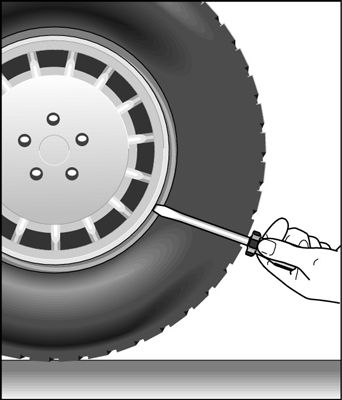
Your Tire Pressure Monitoring System (TPMS) may not warn you about low tire pressure until a tire loses a significant amount of air or if all tires are equally low, and visual inspection can be tricky — many tires lose as much as half of their pressure before appearing flatter.
It’s best to use a tire pressure gauge to regularly check that your tires are at the manufacturer-recommended pressure (you can find this information in your owner’s manual or inside the driver-side door jamb).
Along with checking your tire pressure monthly, visually inspect and rotate your tires as well. Tire rotations help spread out the wear on your tires to help them last longer. In general, you should try to rotate your tires every 5,000 to 10,000 miles. As a good rule of thumb, plan to have your tires rotated each time you get your oil changed.
It’s also smart to visually inspect your tires regularly for tread wear and signs of damage. Tires should have a minimum of 3/32 inches of tread depth to be safe and should be free from cracking, bulging sidewalls, or bubbles. (Some states and manufacturers may require even more minimum tread depth.)
(Some states and manufacturers may require even more minimum tread depth.)
Along with the recommended tire pressure, tires also have a maximum load rating and maximum pressure printed on the sidewall. Heavier loads put more strain on your tires, and exceeding their load limit could lead to a tire blowout.
Always be mindful of how much weight you are loading your car with and, if necessary, increase your tire pressure to handle the increased weight, but do not exceed the maximum tire pressure.
Potholes, nails, pieces of glass — roadways are filled with potential hazards for your tires! While driving, always scan the road ahead for problems. Potholes and large road debris can damage your tires without actually puncturing them, but may cause cuts and bulges that could lead to a flat, critical tire damage or vibrations later on.
While metal pieces, rocks, and other hazards are not always avoidable, if you know you’re going to be driving near construction zones or other areas with a lot of road debris or damage, consider taking an alternate route.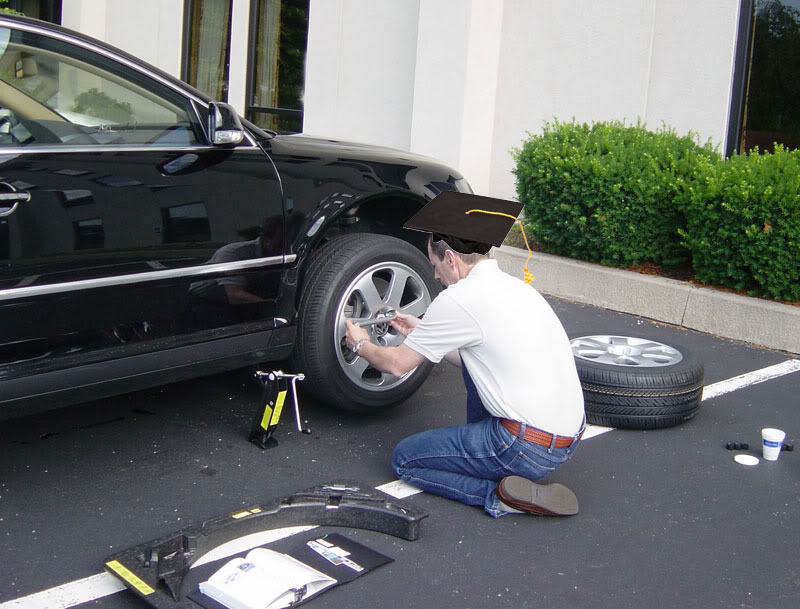 However, if you find that your tires are frequently flat, the problem may not be with the road, but with the tire itself.
However, if you find that your tires are frequently flat, the problem may not be with the road, but with the tire itself.
Whether you like it or not, flats just happen sometimes. There’s no way to spot every stray nail or piece of glass on the road before it punctures your tire. For those who like to be prepared, run-flat tires provide a convenient solution to the inevitable flat.
Run-flats, like Bridgestone DriveGuard tires, are self-supporting in the event of sudden tire pressure loss. With reinforced sidewalls and cutting-edge bead technology, these tires can support the weight of your vehicle for up to 50 miles and up to 50 MPH after a puncture*. Run-flat tires give you the peace of mind to know you and your family won’t be stranded on the side of the road if you get a flat.
*Repairable in limited conditions.
Call for Firestone Roadside Assistance when you have a flat tire! We'll tow you to the nearest Firestone Complete Auto Care and fix your flat or hook you up with a new tire if your tire can't be repaired.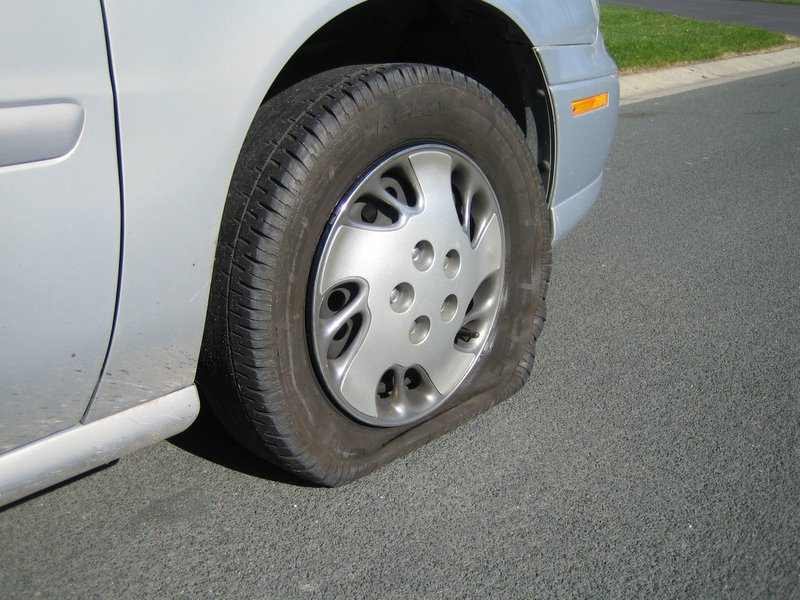
Flat tires happen. They can happen at any moment in any location. They can be caused by a nail, screw, sharp rock or a multitude of other hazards on the road. No matter how the flat tire happens, it is nearly always a major inconvenience. So, the question is, “Can you drive on a flat tire?” If your flat happens in the middle of the highway, driving on it so that you are safe is smart, but going any further will be damaging to the wheel and increase the probability of a road accident. Read on to learn a little more about the dangers of driving on a flat tire.
The simple answer is no. Although, as mentioned above, drive so that you are not in traffic to the side of the road. Driving on a flat tire can put you and your passengers’ safety at risk, as well as damage your vehicle. When you attempt to drive on a flat tire, you’ll notice that your vehicle will not handle appropriately, and you may cause structural damage. The wheel, brakes, and alignment could be ruined as well as your suspension and steering systems. If you attempt to drive on a flat tire, you could be paying for more than just a flat tire fix.
The wheel, brakes, and alignment could be ruined as well as your suspension and steering systems. If you attempt to drive on a flat tire, you could be paying for more than just a flat tire fix.
The first thing you need to do when you have a flat tire is to get somewhere safe that isn’t too far away. The side of the road is fine.
Now that you are safe, you have a few options to choose from. You could change the tire yourself if you have a spare. Or you can use an emergency sealant if the tire does not have a large hole, is not shredded, or completely blown out. The sealant is usually only good for punctures that are ¼ inch or less.
If neither of these options is feasible, it might be time to call for a tow and determine if you need a simple repair or a complete replacement of your flat tire.
Sometimes, there is just no avoiding a nail, screw or sharp object on the highway while going 55 miles per hour.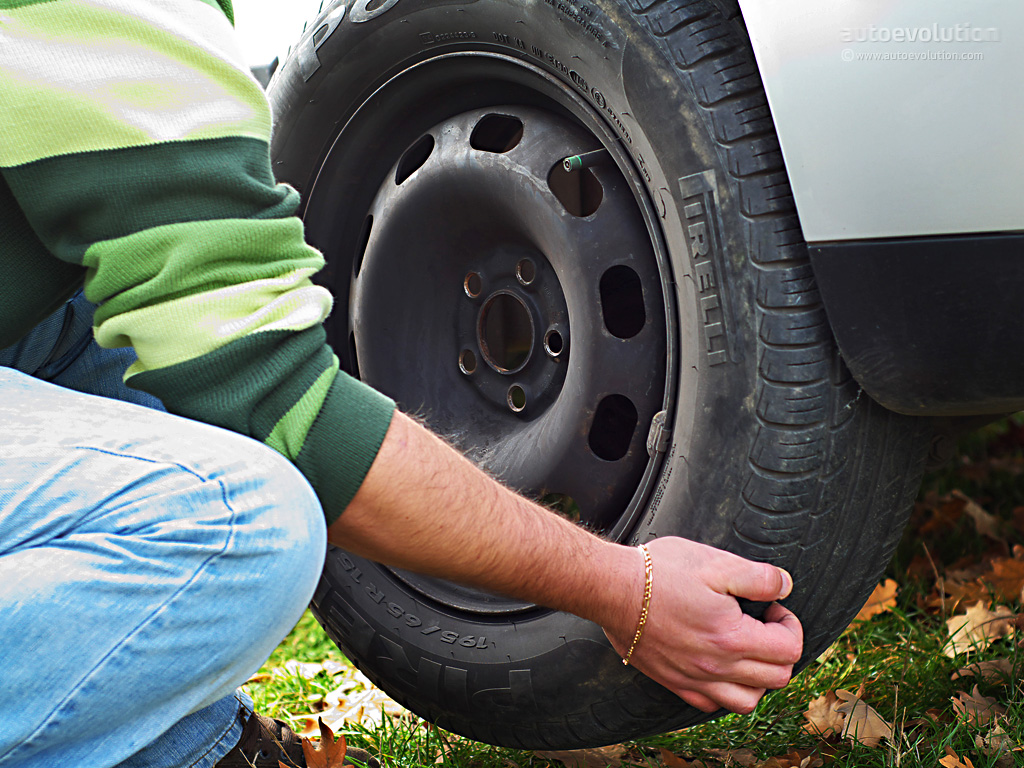 However, there are some preventative measures you can take to minimize the chances of a blow-out or flat tire.
However, there are some preventative measures you can take to minimize the chances of a blow-out or flat tire.
The National Highway Traffic Safety Administrations (NHTSA) recommends checking the tire pressure on your vehicle every month. This includes the spare tire. It’s important to check the tires when they are considered “cold”. This means first thing in the morning or three hours after it has been driven. Low tires can contribute to lower fuel efficiency, and they are more prone to damage.
Visually checking your tires can be misleading, as some tires can lose up to 50% of their pressure before they appear flat. Although some vehicles come with a Tire Pressure Monitoring System (TPMS) it may not warn you until the pressure is significantly lower. You want to catch the pressure loss as soon as possible.
Refer to your owner’s manual for their recommended tire pressure. Using a pressure gauge, check each tire every month to ensure that each tire is at the appropriate level.
Rotating your tires on a regular basis helps spread out the wear and tear on the tires. This helps them last longer. Tire rotations should take place every 5 to 10 thousand miles. A good way to remember to do this is to have your tires rotated every time you get your oil changed.
As a general rule, tires should have a 3/32” tread depth to be considered safe. Some states or manufacturers may require even less tread depth. Owners should consider visually checking their tires every month when doing tire pressure checks. Your tires should not have any cracking, bubbles, or bulging sidewalls. It’s also a good idea to understand When to Change Tires on your vehicle.
Each tire not only comes with a recommended pressure, but also with a maximum pressure and maximum load rating on the sidewall of the tire. Take note of the maximum load rating and do not go over that. (help learning How to Read Tires) If you are hauling items in your vehicle over the normal passenger(s) be sure to adjust your tire pressure without going over the maximum.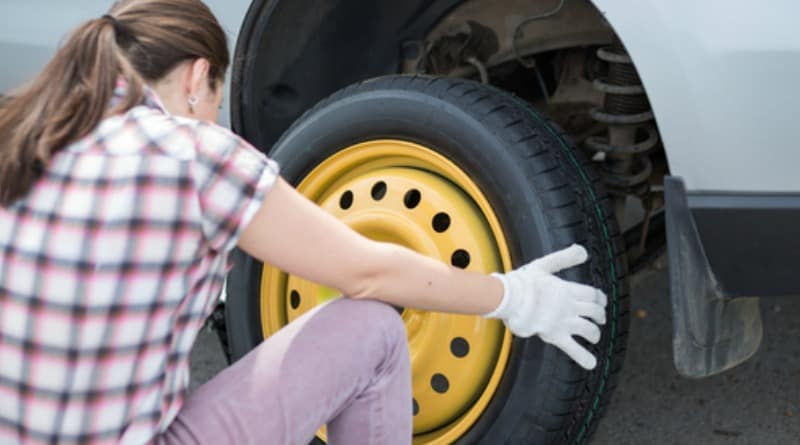 Larger loads put more stress on the tires and if overloaded can cause a tire blowout.
Larger loads put more stress on the tires and if overloaded can cause a tire blowout.
From nails to potholes, glass, and everything in between, the roadways are littered with possible road hazards. Always be aware of your surroundings when driving, even looking at the roadway ahead of you for possible hazards. Large debris and potholes may not puncture your tire, but can cause damage to your wheels, rims, and alignment.
It is hard to avoid some hazards. Seeing a nail or screw in the highway going 55 MPH is a bit difficult. However, if you know the road you will be traveling has construction happening, consider taking an alternate route that will have less potential for hazards on the road. If you are consistently having flat tires, the problem may be the tire itself instead of the road.
No matter how many ways you try to prevent them, flat tires happen. It is literally impossible to see every single road hazard before your tire hits it.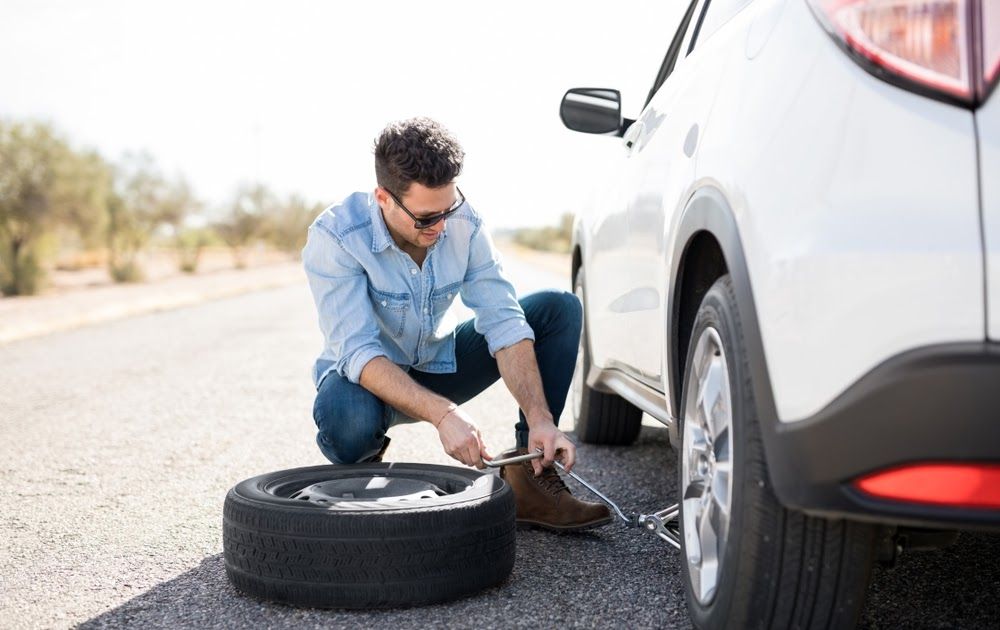 To be truly safeguarded against flat tires happening at the worst time, consider installing run-flat tires on your vehicle.
To be truly safeguarded against flat tires happening at the worst time, consider installing run-flat tires on your vehicle.
Run-flats, like those sold by Dan The Tire Man, are just that. With a sudden loss of tire pressure, the tires are self-supported with reinforced sidewalls that can drive up to 50 miles at 50 miles per hour. Run-flat tires give you peace of mind that you and your family will be safe from a dangerous situation should a flat tire happen.
A lot can happen that causes a flat tire. Hazard in the roadway, deteriorating tires and dangerously low pressure are just a few. Unless you have run-flat tires on your vehicle, it is best to just move your vehicle off the roadway and assess the damage to your tire(s). Driving on a flat tire can cause more damage, equaling more money than just fixing a flat. Be safe.
Vladimir Gavrilov
Estimated reading time: 4 minutes
8683
Category: Driving technique
Cars often get stuck in wet snow and begin to skid helplessly. How to get out of the trap without resorting to special equipment, such as a winch, rope and snow chains?
How to get out of the trap without resorting to special equipment, such as a winch, rope and snow chains?
Heavy snowfalls and thaws turn courtyard areas into a snow trap. The softened snow is pressed through, and the outgoing transport rolls deep ruts. The longer the winter, the deeper they get. As a result, a simple entry and exit turn into a test for equipment. On flat areas, you can skid so much that you have to tinker hard until you pull the car onto a free road. How to seamlessly bypass the rut?
Often after snowfalls you see how during slippage some motorists turn the wheels until the clutch burns out. Others are more cautious and try to rock the car. If this does not help to get out, then they put planks, branches of shrubs and rags from the nearest garbage cans under the wheels. But such devices do not always work. Experienced drivers who are well acquainted with the peculiarities of Russian winters advise getting out of captivity in a different way: on flat tires.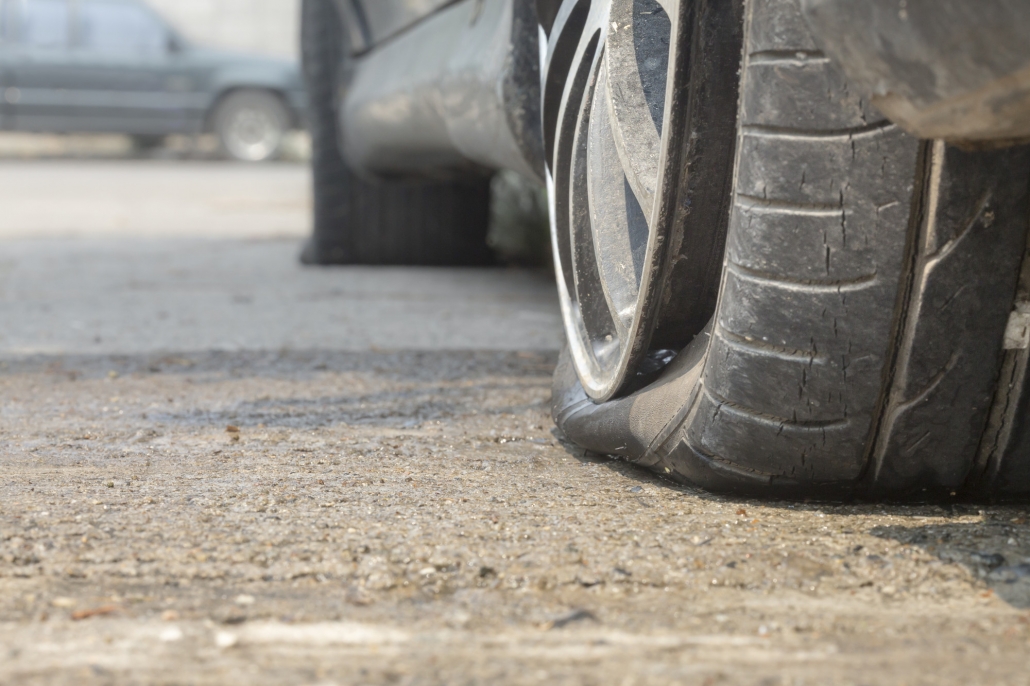
If the yards are cleaned even a little and the main problem is hollows and ruts where the wheels are hopelessly slipping, then you can deflate the tires by half. Enough about 1.2-1.0 atmospheres to get a good hold. About the same pressure is used by jeepers to travel through mud and sand.
The physics of the process can be described as follows. A half-flat tire becomes limp and spreads under the weight of the car. The contact patch increases, and with it the pressure of the machine on the surface decreases. But the main thing is different. The flattened rubber forms an additional lip that works like snow chains wrapped around a tyre. The edge cuts into the ice and prevents the wheel from slipping. In addition, an additional shoulder of force is created, the rubber adheres more closely to the surface, breaks through the water film, scratches behind the ice tread and creates friction force. The larger the rubber edge, the less likely it is to break the wheels into slip. Therefore, on half-flat wheels, the car is easier to get out of a slippery rut.
Therefore, on half-flat wheels, the car is easier to get out of a slippery rut.
But rutting is a danger not only at home, but also on an intercity highway. The track there is much smaller and only about two centimeters high, but its tortuosity and torn edges cause problems with directional stability. Due to transverse vibrations, yaws are formed. For example, a car rushes straight, and then gets into a section with torn edges and rushes about in shaking, so much so that the steering wheel breaks out of your hands. It happens that due to vibrations, the front wheels jump out of the rut, while the rear ones remain in it. At this point, the car may skid. And it depends only on the skill of the driver whether he can straighten the car.
Yaw problems can be alleviated by lowering tire pressure. If the tires are inflated to about 1.5 atm, then they react less to buildup and, due to softness, smooth out side slips that cause yaws. True, it is impossible to accelerate on under-inflated wheels over 80 km / h. Otherwise, a tire that has lost its rigidity during sudden braking or during lateral overloads can break and jump off the rim, which will lead to a sharp drop in pressure and loss of control.
Otherwise, a tire that has lost its rigidity during sudden braking or during lateral overloads can break and jump off the rim, which will lead to a sharp drop in pressure and loss of control.
Under-inflated wheels are also useful for driving on snow. For example, if the driveways to rural houses are skidded, but you need to get to the dacha, then you can lower the tire pressure to 0.5 atm. Then the contact patch of the wheels will increase by more than one and a half times and the pressure on the surface will decrease. The car will fall through less and be able to drive through a snowy area. The owners of off-road vehicles are aware of this technique and travel on flat tires not only on virgin snow, but also on loose sand.
True, with such pressure it is absolutely impossible to slip and accelerate over 40 km / h, since tires that are three-quarters flat cease to hold loads and can be easily disassembled if the accelerator is inaccurately acted upon. As soon as the snow-covered area has been passed, the pressure must be raised again to the values prescribed by the instructions.
tips for motorists how to survive the winter
Next article
Media news2
If you have a spare tire, you can drive up to 50 miles before you need to change a flat tire. If you do not have a spare, you can drive up to 30 miles before you need to change a flat tire. After that, your car will begin to lose power and eventually it will need to be replaced.
Repairing a flat tire can be a hassle, but not impossible. The maximum distance you can drive with a flat tire is limited by the size of your spare and the amount of air in your tires. If you have a full size spare, you can usually drive up to 150 miles before before you need to change a tire. If you only have a small spare, you can get about 50 miles before you need to change a tire.
If you have a full size spare, you can usually drive up to 150 miles before before you need to change a tire. If you only have a small spare, you can get about 50 miles before you need to change a tire.
Repairing a flat tire can be dangerous if you don't know how to do it. Driving with a flat tire can cause you to lose control of your vehicle and cause an accident. If the tire is badly damaged, it can also be very dangerous to drive. , it's safest to call a tow truck or take your car to a mechanic if you have a flat tire. Depending on the size and type of apartment, repairs can take anywhere from 10 to 30 minutes. However, if the tire is significantly damaged or there are other safety issues, you will probably should seek help as soon as possible.
Fixing a flat tire can be a hassle, but it's not as risky as you might think. The most common risks associated with driving with a flat tire are getting stuck and getting into an accident. Here are some tips to help you avoid these problems:
Here are some tips to help you avoid these problems:
If possible, try to find a safe place to stop and change a tire. If you cannot find a safe place, try to get as far away from the accident as possible. essentials in case you have to wait for help.
Never attempt to fix a flat tire yourself. It is important to get someone else involved if there is a chance you could be injured or worse. And never drive if your tires are bald or badly damaged—these conditions are significant increase the risk of an accident.
If you have a spare tire and a jack, you can fix a flat tire yourself. First, find a flat. Check the sidewall for damage. If there is no damage, try inflating the tire with a pump or a bicycle pump. , use your car's air compressor to inflate the tire. Finally, use the jack to raise the wheel and replace the flat tire with a spare.
Repairing a flat tire can be a daunting task, but with the right tools and knowledge, it can be done in a relatively short amount of time.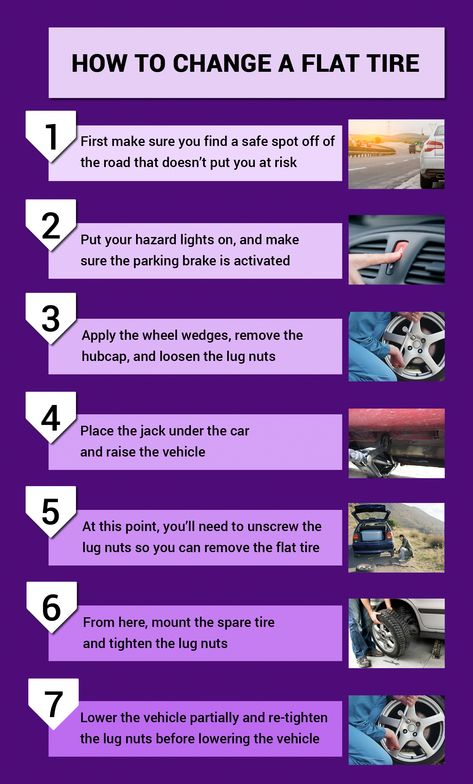 Here are four tips to help you fix a flat tire as quickly as possible:
Here are four tips to help you fix a flat tire as quickly as possible:
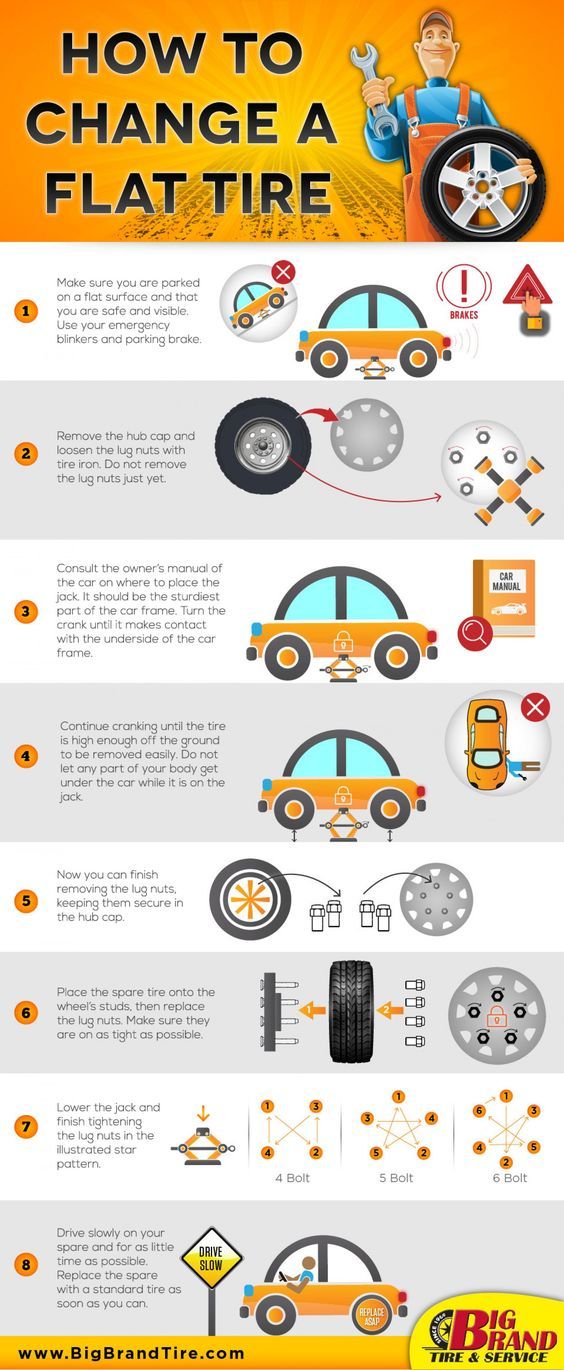
Repairing a flat tire while driving can be a hassle, but not impossible. Here are some tips to help you get the job done as quickly and safely as possible:
4a Position jack stands at the front and rear of the vehicle so that the wheels are at least 2 feet off the ground (or the floor if the vehicle is parked on a raised platform). Position the jacks so that they are flush with each other and evenly support the front and rear of the car; do not overtighten the screws holding the jacks!
4b Remove the lug nuts from all four wheels with a socket wrench (or similar) - do not overtighten! Once the tabs are removed, use pliers to grab the inside edge of the rim where it joins the hubcap and spoke assembly; turn until the entire rim is off the vehicle - BE CAREFUL NOT TO DAMAGE THE CAP OR SPOKES IN THIS DOING! should be approximately 50 ft/lbs (45 Nm).
 If your tires are under-inflated, air will escape more easily when they deflate, which can make repair difficult and increase the risk of an accident.
If your tires are under-inflated, air will escape more easily when they deflate, which can make repair difficult and increase the risk of an accident. Repairing a flat tire can take anywhere from a few minutes to an hour or more, depending on the severity of the damage. In general, it takes about 10 minutes to change a tire, and it takes about 10 more minutes to drive safely during the change. If you have access to the compressor, repairing a flat tire using this method can take as little as five or ten minutes.
If you don't have access to a compressor, you will need some tools (jack, wrench, spare tire) and time.
a 14flat tire15How do I16fix a flat tire on my car170043
